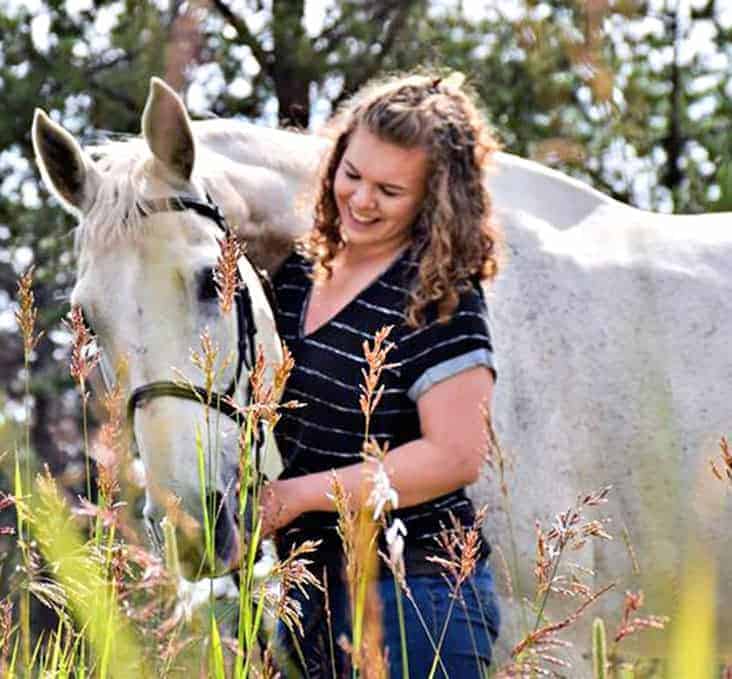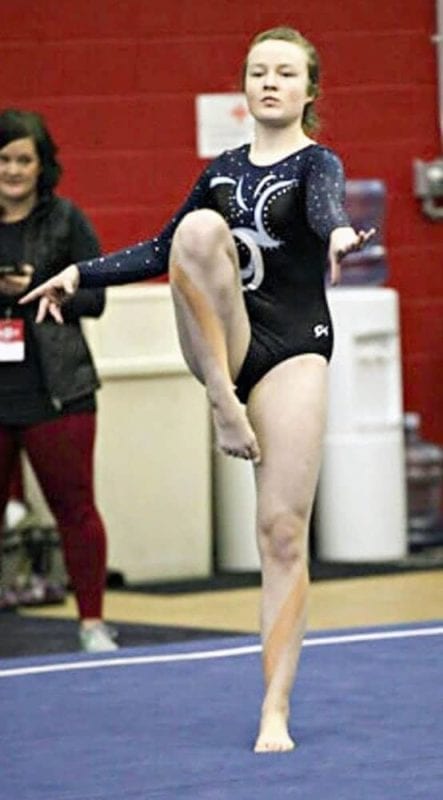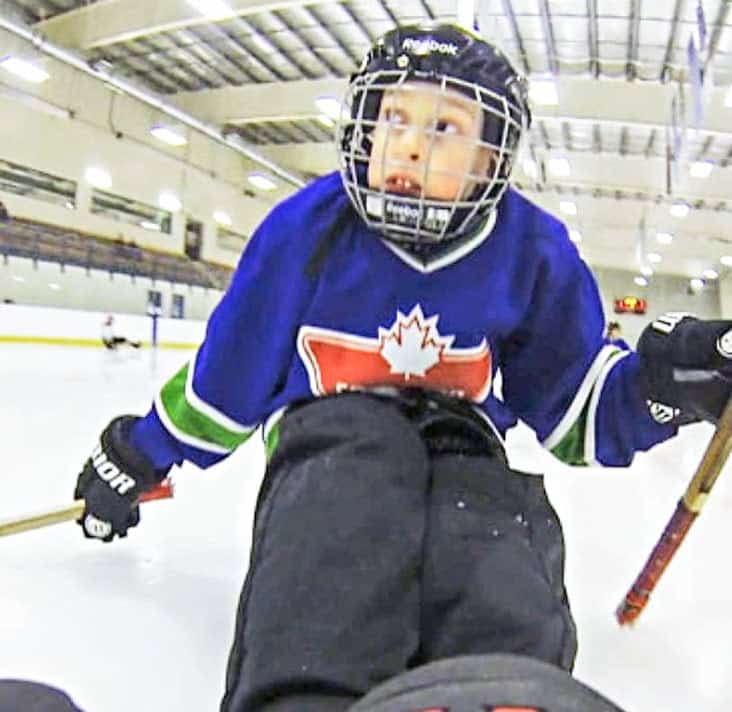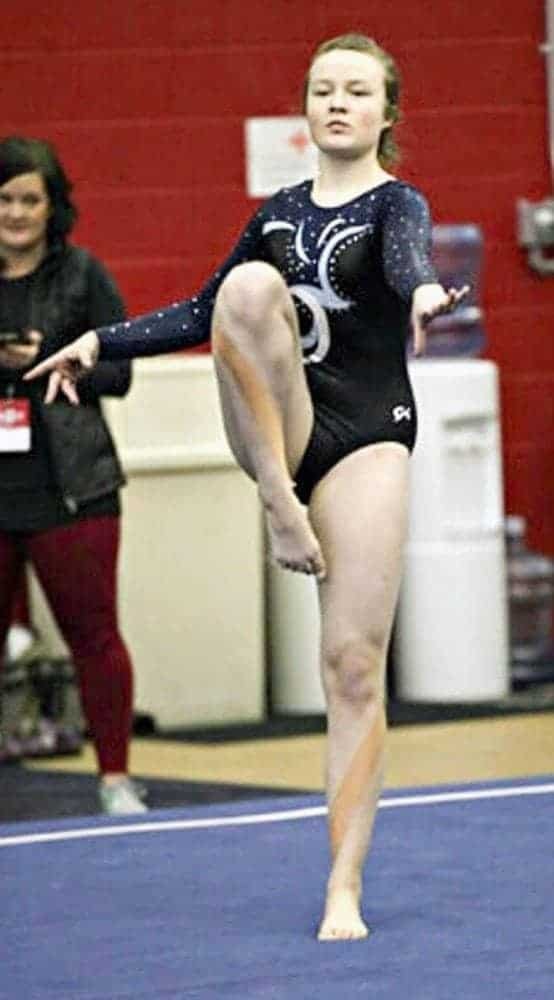The ways in which illness and physical ailments shape life and sports activities are many. Not only do the ailments cause barriers to young athletes but the lack of specialists can cause further barriers to sporting lifestyles.
Yellowknifer caught up with three young people who have been known in the city to be active in sports and asked how their physical ailments have shaped their sporting lives.
Lauren Seabrook, 18
Equestrian, track & field
Lauren Seabrook, an 18-year-old former Sir John Franklin student just moved to Peterborough this summer to take up studies in International Development at Trent University.

In recent years, she has been well known for her involvement in track and field, horse jumping and equestrian, and skating on the local scene and has had dreams of continuing such activities into her young adulthood.
Due to unforeseen illnesses, however, these plans changed almost "overnight," she says.
Over her teenage years she began developing Complex Regional Pain Syndrome (CRPS), an illness that involves severe physical pain, swelling and changes in the skin.
According to the University of Alberta Faculty of Medicine and Dentistry, this can lead to various symptoms including burning pains, sensitivity to touch, intolerance to cold, decreased circulation, discoloration, sweating, swelling, clumsiness, tremors, dystonia, and inability to move a joint through a full range of motion.
In her case specifically, the illness has effected both of her legs. The condition has made it difficult if not impossible for her to participate in most physical activities. First diagnosed at age 14, Seabrook says many of her strong desires to build a life around sports have taken a setback and it is something that she has had to learn to accept.
Seabrook's last significant sporting competition was at the annual NWT Track and Field Championship in Hay River in June 2017. Yellowknifer reported at the time that Seabrook had trouble finishing the (1500 metres) race as she fell down more than once due to the symptoms of her condition. Fellow competitors, including Kristal Gambler of Fort Smith, helped her run the last lap of the race.
"I tried to do track and field last year (2017) and that was a pretty incredible experience," she says. "Running, which I loved to do, is something I can't do anymore."
Seabrook returned to track and field this year and participated in shot put, but did not participate in any of the running events. It was important for her to be present in a supportive role and to be there as team photographer.
This past May, Seabrook received further bad news when she was diagnosed with Fibromyalgia. Like CRPS, this disorder involves problems with the nervous system and severe pain, but the pain she experiences is different, she says.
Things that most teens have taken for granted such as joining friends ice skating or in a fitness class were not options she could get involved with during her high school years because of her illnesses.
As she looks ahead, Seabrook is aiming to overcome the barriers she experiences by swimming daily and taking brisk walks to stay fit. Although the hard training with horses is something she views as of the past, she tries to find ways to be closer to horses and animals for therapeutic purposes.
"It is bittersweet because I used to jump horses and I was involved in equestrian scene," she says. "I still go out to the barn because horses are such a healing thing to me, but now it is more about hanging out with the horses, or grooming them or taking them for a walk."
Shiri MacPherson, 17
Gymnastics
Shiri MacPherson, 17, has experienced chronic physical pain during her teen years as a competitive gymnast. When she was two-years-old she was diagnosed with an aggressive form of Wilms tumour, a common kidney cancer among children ages two-years old to four, according to the Canadian Cancer Society.

Because the cancer was discovered in its fourth stage, she underwent surgery and radiation treatment to have portions of her kidney and lungs removed and this caused a shortage of breath in later years.
While she was treated for the removal of the tumours, she developed physical pain similar to Seabrook, which created obstacles in her desire to participate in her main sporting love – gymnastics.
"About seven years ago we started noticing the long term effects of that (cancer) treatment and it started with the breathing issues," MacPherson says. "My lungs are a lot smaller than people my age because of the tumours they had to remove and radiation treatment. That didn't always mix well with being a competitive gymnast."
She started competing at 11-years old, but soon pain developed in her wrist and joints, which interfered with her ability compete and advance in vault.
"When I first joined, my wrist pain was the worst and I didn't compete," she says. "This really set me back in trying to move up levels because all of my other events (uneven bars, floor and beam) were good, but my vault sucked."
As she grew older, her lungs did not grow because of her condition and this made endurance based gymnastics hard too, particularly in floor events, she says.
Seabrook says a key factor in being able to overcome the setbacks of having these challenges was having a coach that she could connect with as well as supportive teammates.
Desiree Gautreau was a coach with the Yellowknife Gymnastics Club club from 2014 to 2018 and worked closely with MacPherson during this time.
"Some challenges Shiri faces would be cardio and having less lung capacity than most, this makes things like a floor routine more difficult," she says. "We would always design her routines based on her abilities. "I always stressed the importance of quality over quantity for her."
The chronic pain also shaped friendships within sport as both MacPherson and Seabrook say they bonded and found something in common.
"She is one of the only people I know who gets it (challenges of chronic pain with sport) and we have always been tight in that way," MacPherson says. "We have been in the same class our whole life, but she started experiencing issues in middle school and that is kind of when my issues started coming up too. We started talking then and when things started to get worse in high school for both of us, we got closer."
Like Seabrook, MacPherson is looking ahead to her first year in post-secondary studies as she is beginning a nursing program at the University of Lethbridge.
Riley Oldford, 13
Sledge Hockey
Riley Oldford, 13 has been playing sledge hockey in Yellowknife for seven years and within the last year has been central to the development of the sport's first league in the city.

The league had nine dedicated players in its inaugural season last year as they met every Saturday morning for an hour and a half. The league also developed three certified coaches in Scott Green, Jessica Smith, Sharon Oldford and exposed the sport to a wider audience more accustomed to traditional ice hockey.
Riley has cerebral palsy, an illness affecting both legs which cause his muscles take longer to develop. He also has connected tissue disorder and chronic lung disease, meaning that the tissue that connects his joints are soft and flexible.
This was due to being on life support for 68 days when he was a baby. He is running the league website and social media accounts by himself and is energetically trying to encourage anybody and anyone to take part in the Saturday drop-in sessions.
"Just try it," he says when asked what he would tell people who might be interested. "If you don't like it that is fine. Always looking for different players and messaging in hockey tournament- minor hockey."
The aim is to up the nine dedicated players to 12 this year, which might allow for two solid squads to play regularly, Riley says, although all players are mostly still developing.
"Last year Riley was the primary one with a physical disability that was playing because it was the first go through minor hockey, but this year we have three other people with physical disabilities that have shown interest and that we hope to include in the program," says Riley's mother Sharon.
She says the league is beneficial because it helps locate people who have physical or cognitive challenges to get involved in a sport, but also because it is physically demanding, helps people with special challenges connect with general minor hockey league players who often drop in.
